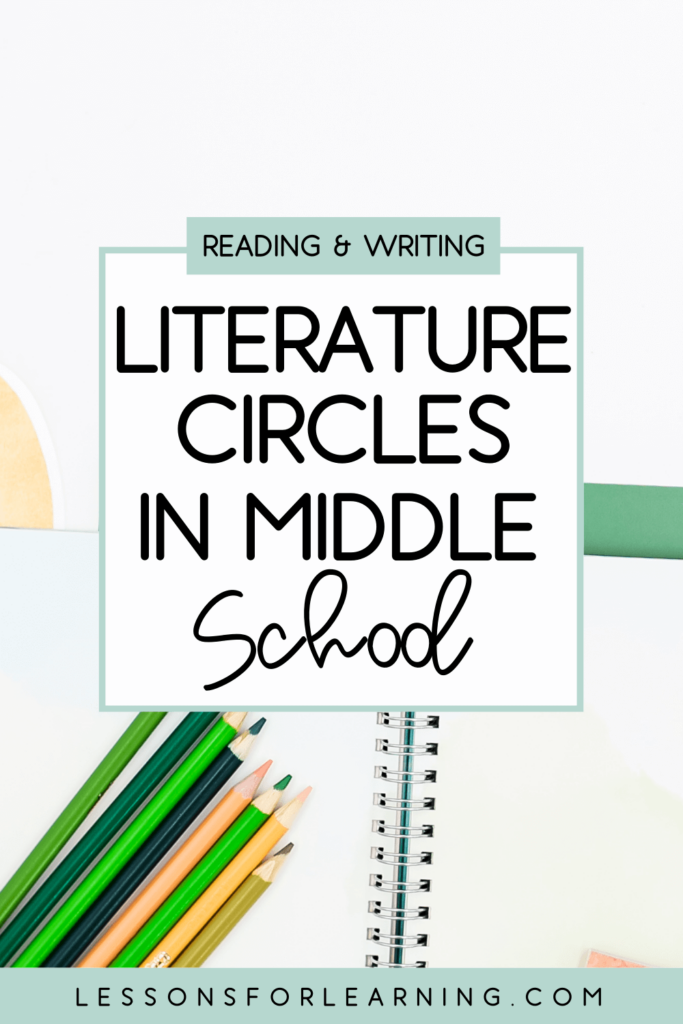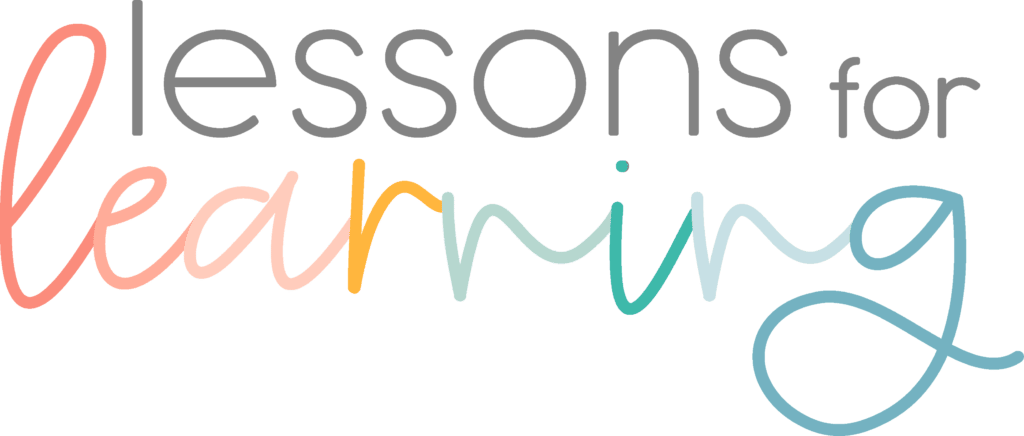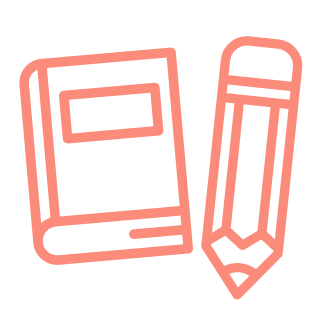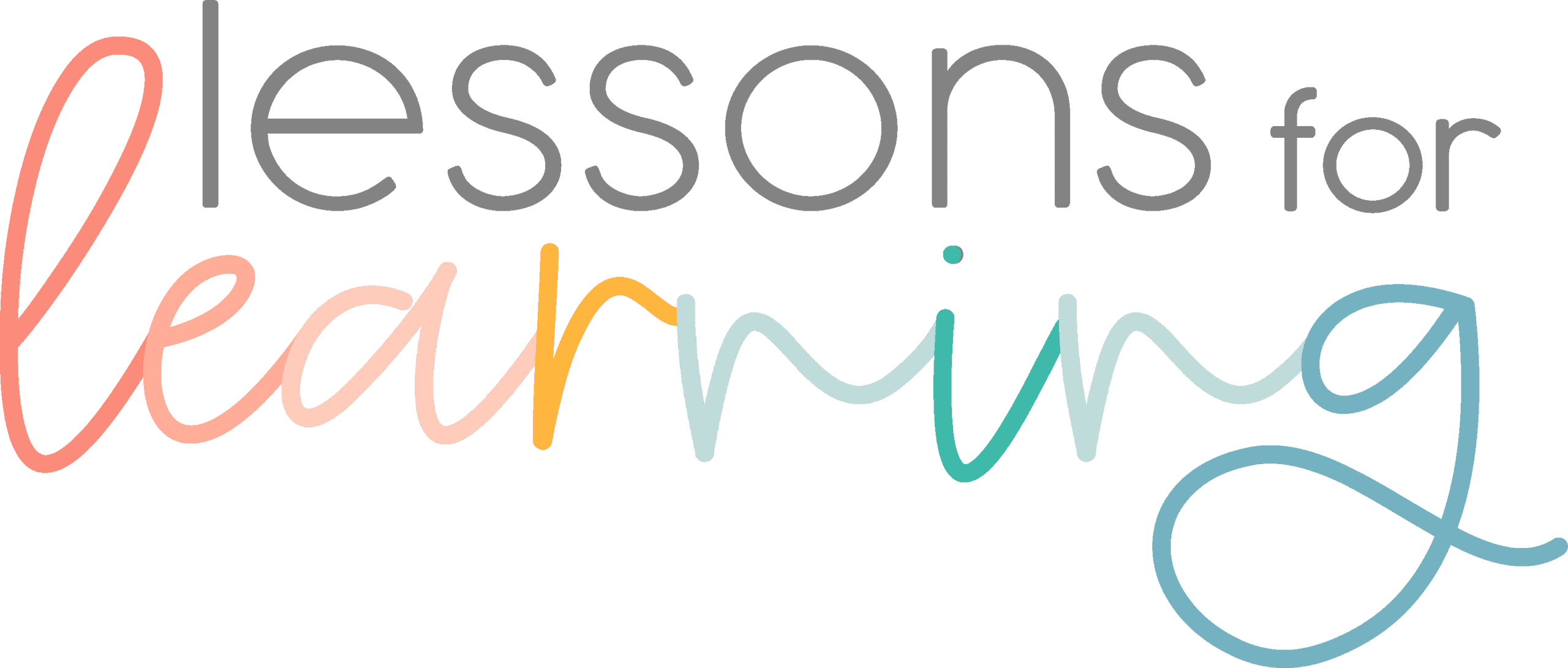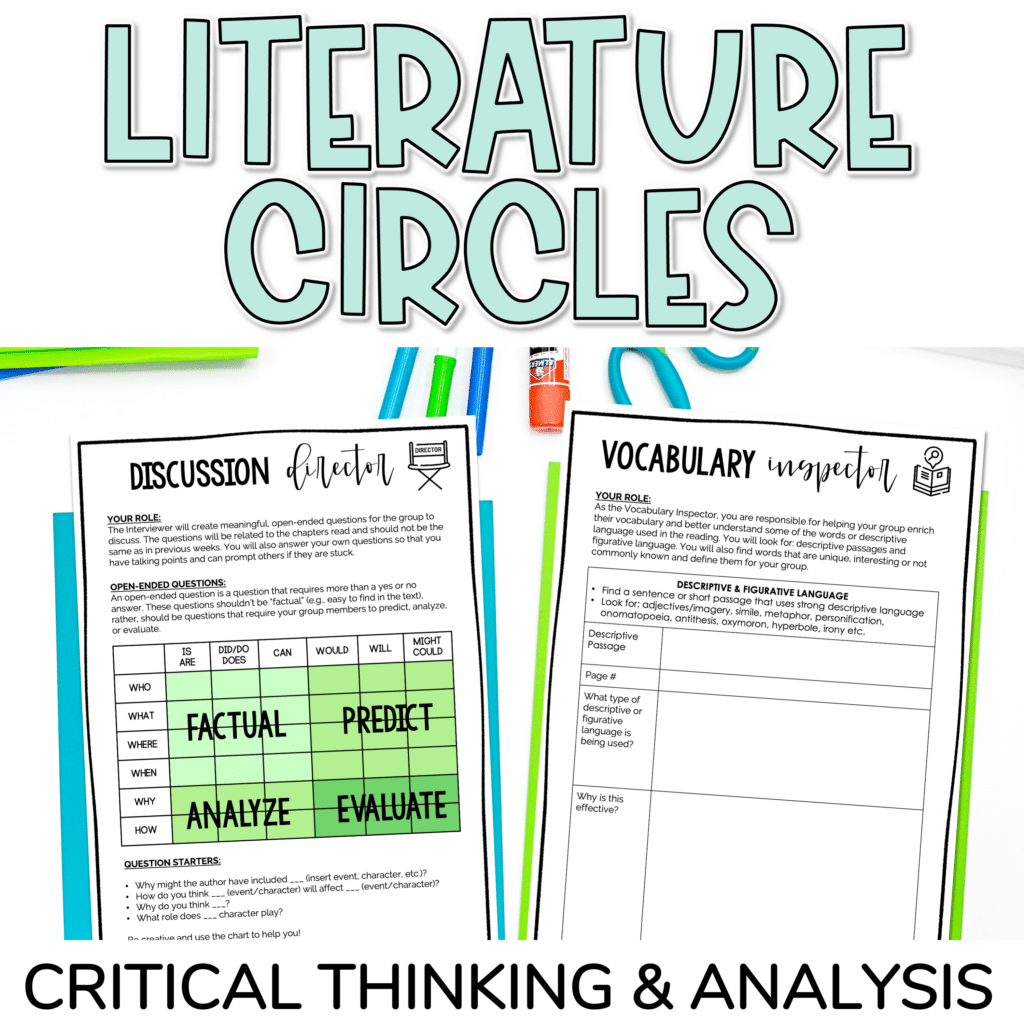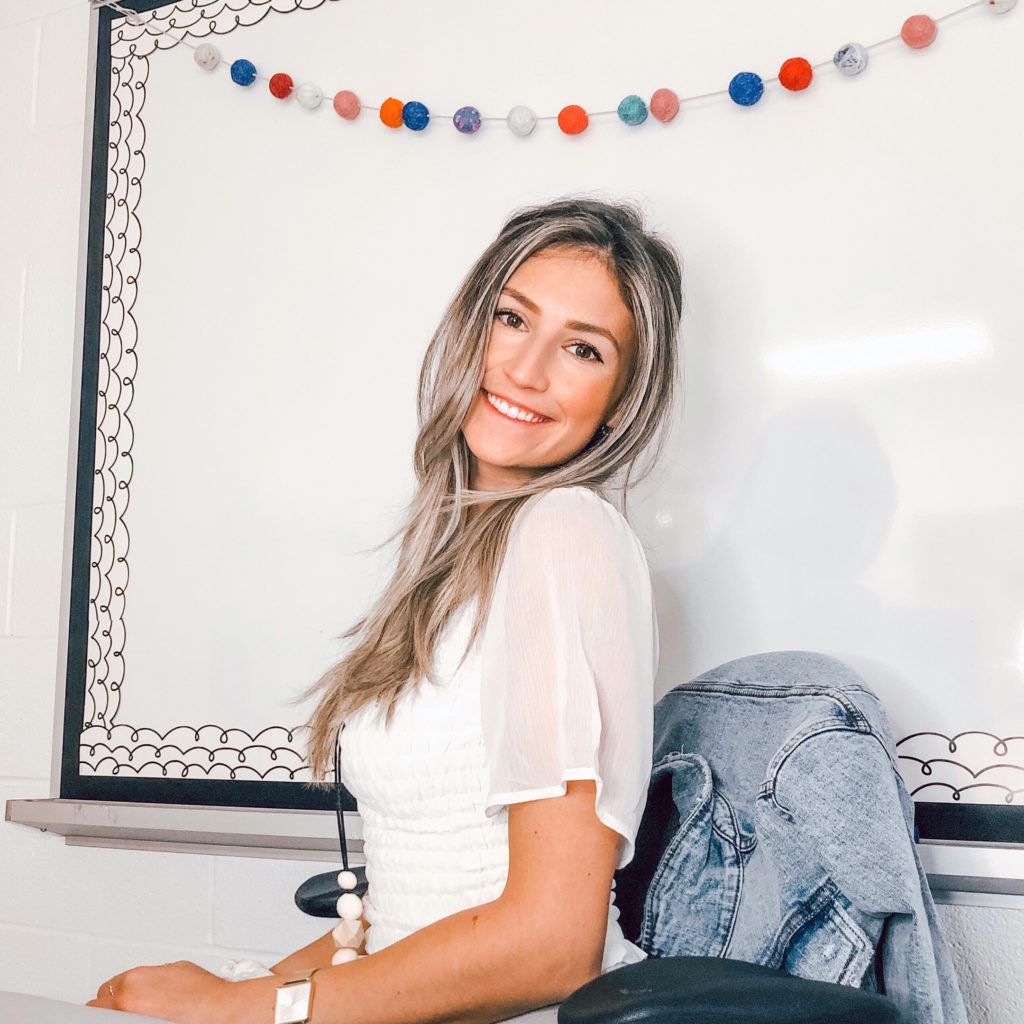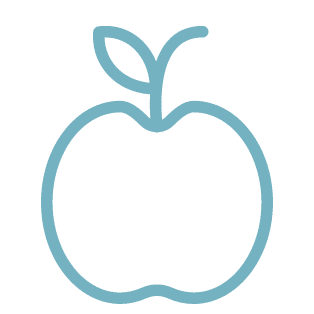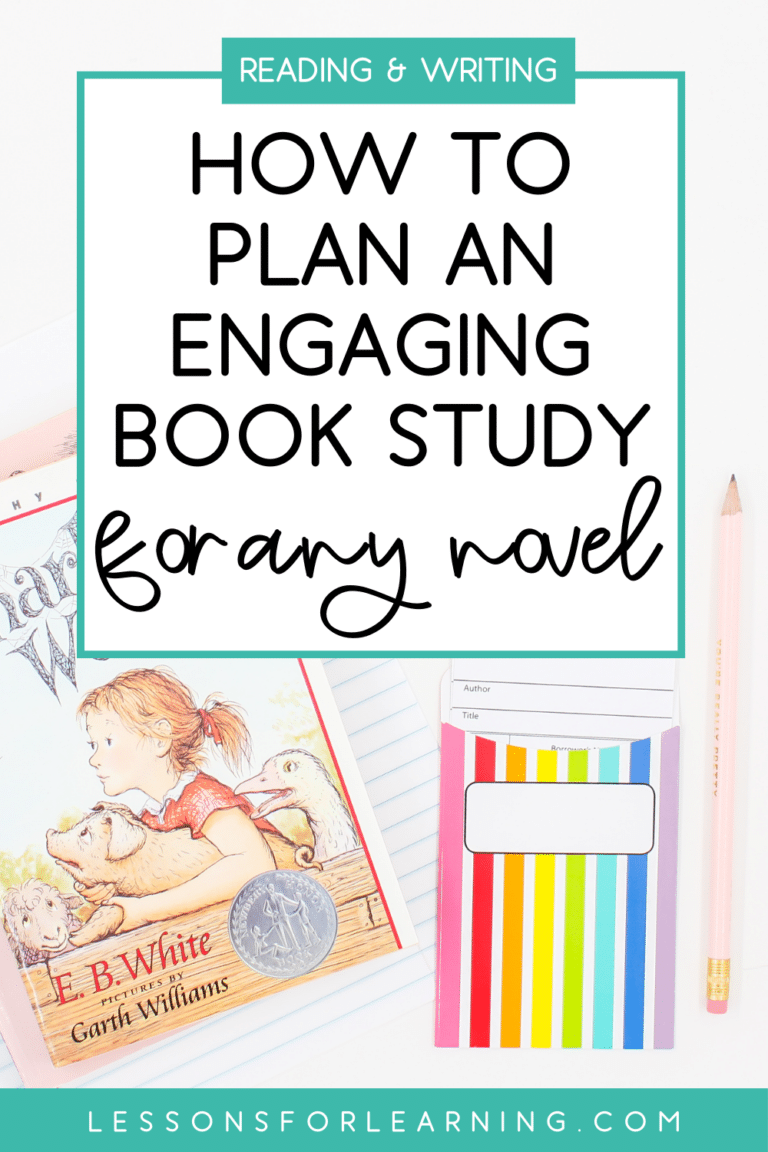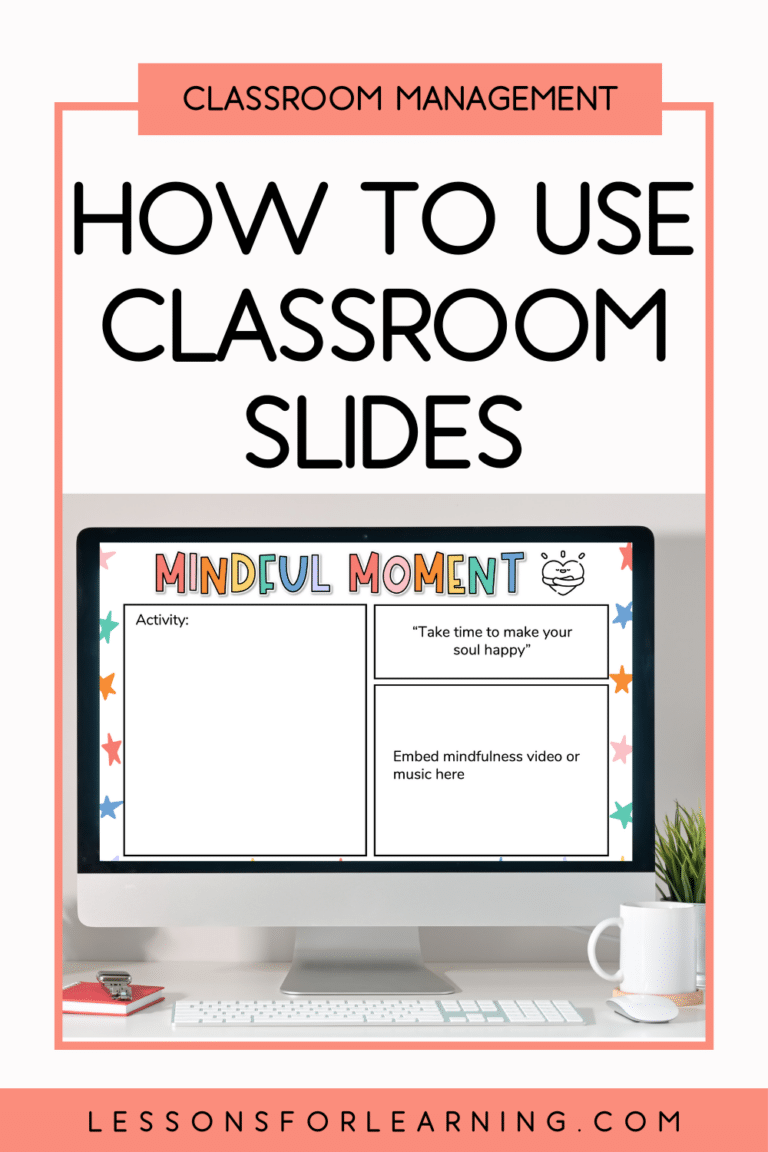Literature circles are a great way to engage middle school students in reading while also fostering critical thinking and discussion skills. When planning literature circles, it’s important to choose the right books that will spark interest and encourage thoughtful conversation. Here are some tips for selecting books for literature circles in grades 6-8, as well as a list of recommended titles.
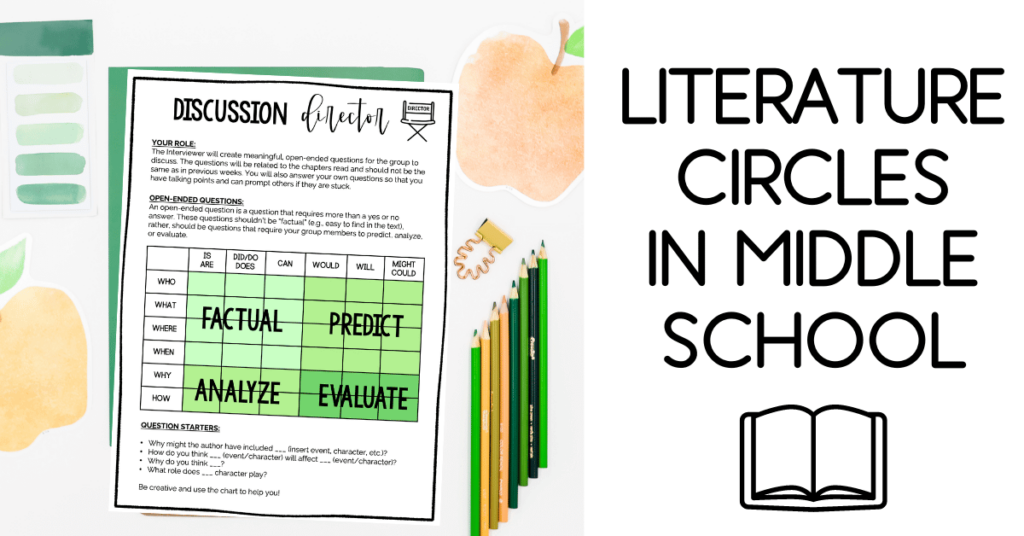
Choosing the Right Books
When selecting books for literature circles, it’s important to consider both the age and reading level of your students, as well as their interests and engagement levels. Here are some things to keep in mind when choosing books for middle school literature circles:
Age Appropriateness: Select books that are appropriate for middle school readers in terms of content and reading level. Look for books that are challenging, but not overly difficult or inappropriate. I always include books at different levels (e.g., simpler themes, less text/length overall) to ensure they feel accessible to all types of readers in my room.
Diversity and Representation: Choose books that reflect the diversity of your student population and provide opportunities for students to explore different perspectives and experiences.
Engaging and Relevant Themes: Look for books that deal with themes and topics that are relevant and engaging for middle school students, such as identity, friendship, social justice, and coming-of-age.
Discussion and Analysis Opportunities: Select books that lend themselves well to discussion and analysis, with complex characters, conflicts, and themes that students can explore in-depth.
Book Suggestions for Literature Circles in Grades 6-8

“90 Days of Different” by Eric Walters – A high school student takes on a new challenge every day for 90 days in an effort to break out of her comfort zone and discover who she really is.
“The Lightning Thief” by Rick Riordan – A boy discovers he is a demigod and embarks on a dangerous quest to save the world of Greek gods and monsters.
“The Hate U Give” by Angie Thomas – A teenage girl witnesses the shooting of her unarmed friend by a police officer and becomes an activist for racial justice.
“Refugee” by Alan Gratz – Three refugee children from different eras and places struggle to survive and find safety in a world of conflict and displacement.
“Ghost” by Jason Reynolds – A young boy joins a track team and learns about discipline, perseverance, and the power of friendship.
“Ghost Boys” by Jewell Parker Rhodes – A young boy is shot and killed by a police officer and becomes a ghost who witnesses the aftermath of his death and seeks justice.
“Front Desk” by Kelly Yang – A young girl helps her immigrant parents manage a motel in California and learns about hard work, perseverance, and the power of kindness.
“Fish in a Tree” by Lynda Mullaly Hunt – A young girl with dyslexia learns to overcome her challenges with the help of a caring teacher and supportive classmates.
“The Best At It” by Maulik Pancholy – A middle school student struggles with his identity as an Indian-American and his feelings of being different from his peers.
“The Wild Robot” by Peter Brown – A robot is stranded on a remote island and learns about the animals and environment around her, as well as the value of compassion and friendship.
“The Barren Grounds” by David Robertson – Two Indigenous siblings are sent to live with their estranged grandmother and discover a magical portal to a world of legends and folklore.
“A Long Walk To Water” by Linda Sue Park – This novel tells the true story of two young people in Sudan who are separated by war and struggle to survive and find each other years later.
“The Crossover” by Kwame Alexander – Twin brothers who love basketball navigate their relationships with each other, their father, and their teammates.
“The Giver” by Lois Lowry – In a dystopian society, a young boy learns the truth about his world and fights for change.
“Holes” by Louis Sachar – A boy is sent to a juvenile detention center where he uncovers a mystery and finds redemption.
“The Outsiders” by S.E. Hinton – A group of teenagers from different social classes struggle to survive in a violent world of gangs and rivalries.
“Roll of Thunder, Hear My Cry” by Mildred D. Taylor – A young girl and her family face racism and discrimination in the Deep South during the Great Depression.
“Number the Stars” by Lois Lowry – A young girl in Nazi-occupied Denmark helps save her Jewish friend and learns about the power of courage and compassion.
Be sure to check out all books for literature circles before assigning them to students. Some of the novels above discuss heavier, more mature topics and may not be suitable for some of your Grade 6 students.
Running Successful Literature Circles
Once you have selected the right books for your literature circles, it’s important to plan and facilitate meetings that will encourage active participation and thoughtful discussion. Here are some tips for running successful literature circles in grades 6-8:
Assign Literature Circle Roles: Assign each student a role or task to complete before each meeting. You can assign some of the traditional roles or grab this resource here to help!
Set Clear Expectations: Discuss the importance of active listening, respectful communication, completing tasks on time, and what independent work periods look like during literature circles.
Schedule Regular Meetings: Schedule regular meetings for your literature circles to ensure that students have enough time to read and prepare for each meeting.
Provide Guidance: While literature circles are meant to be student-led, it’s important to provide guidance and support to your students as they work through the book. Be available to answer questions, provide feedback, and facilitate discussions as needed.
Assess Participation: Consider assessing participation in some way to ensure that all students are actively engaged in the literature circles. This might include taking notes on their contributions during meetings, assigning a participation grade, or asking students to complete a reflection on their experience.
Once you get started, you will see just how many benefits of literature circles there are! If you are looking for more information on roles or how to get started, click here.
